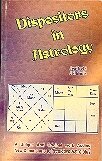
|
The Astrology Center of America, 207 Victory Lane, Bel Air, MD 21014 Tel: 410-638-7761; Toll-free (orders only): 800-475-2272 |
||||||
|---|---|---|---|---|---|---|
| Vedic TITLE Index | Vedic AUTHOR Index | Vedic PAGES Index | Vedic SEARCH Engine | Astrology Home | E-Mail: | |
 |
Vedic Astrology:Books by J.H. Bhasin |
In the front of Hora Shatak is this:
|
The great savant is no more but the rich treasure of knowledge left by him will continue to guide the aspiring students of astrology, like a luminious lighthouse. |
Regret I could not find a photo of Shri Bhasin. Here are his books:

|
||
 |
||

|
||
 |
||

|
||
 |
||

|
||

|
||

The Astrology Center of America
207 Victory Lane, Bel Air, MD 21014
Tel: 410-638-7761; Toll-free (orders only): 800-475-2272
| Vedic TITLE Index | Vedic AUTHOR Index | Vedic PAGES Index | Vedic SEARCH Engine | Astrology Home | E-Mail: |
|---|